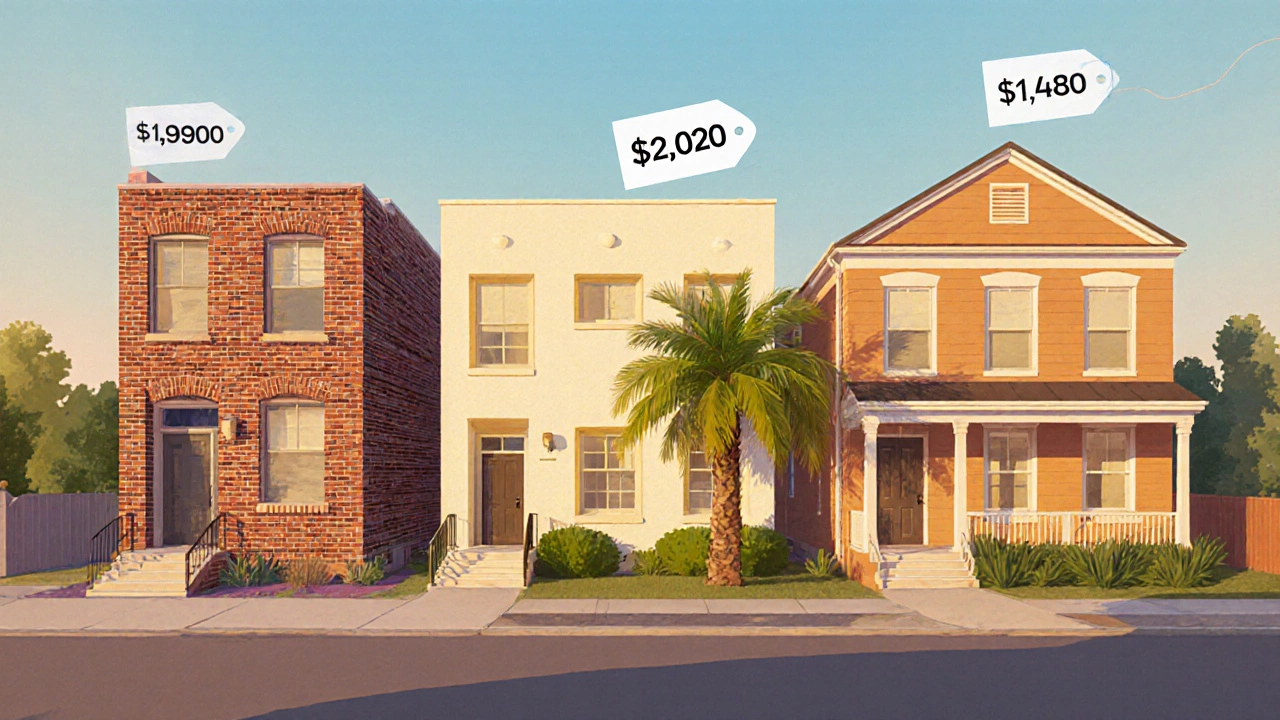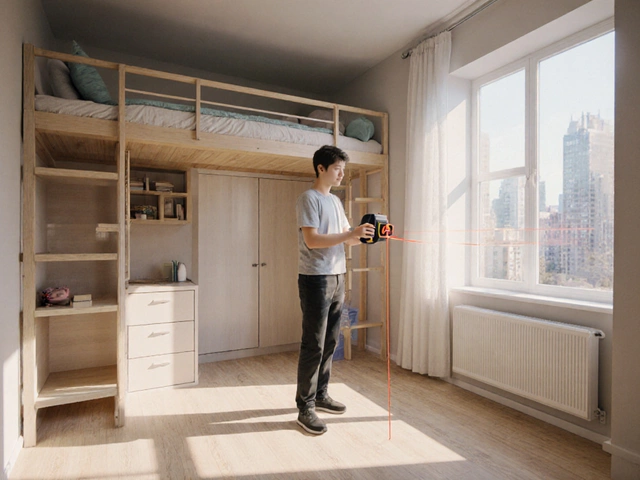Maximum Section 8 Rent Payment Limits Explained

Section 8 Rent Calculator
Calculate the maximum rent a Section 8 voucher will cover in your area based on the HUD Payment Standard and Utility Allowance.
Your Maximum Rent Coverage
Ever wondered why some landlords say they can’t rent to a Section 8 tenant unless the rent is under a certain amount? The short answer is that the government sets a ceiling - but the exact figure depends on a handful of rules you probably haven’t heard about. Below you’ll find everything you need to know to figure out the highest rent a Section 8 voucher will actually cover.
Key Takeaways
- The Section 8 rent limit is based on the local Payment Standard, which ties to the HUD‑published Fair Market Rent (FMR).
- Vouchers pay up to 100% of the Payment Standard for the chosen unit size, plus a utility allowance.
- Tenants usually contribute 30% of their adjusted income; the remainder comes from the voucher.
- Landlords can request a waiver for rents above the limit, but approval is rare and varies by PHA.
- Understanding the calculation helps both tenants and landlords avoid surprise shortfalls.
What is Section 8?
Section 8 is the informal name for the Housing Choice Voucher Program run by the U.S. Department of Housing and Urban Development (HUD). The program provides rental assistance to eligible low‑income households, letting them choose housing in the private market instead of being limited to public housing units.
How Does HUD Set the Payment Standard?
The cornerstone of every voucher’s payout is the Payment Standard. HUD updates this figure annually for every metropolitan area, basing it on the Fair Market Rent (FMR). The FMR represents the 40th‑percentile rent for standard-quality units of a given size.
HUD then applies a multiplier - usually 90% of the FMR - to arrive at the Payment Standard. The idea is to give families enough leeway to rent a decent unit while keeping the program’s budget in check.

Maximum Rent a Voucher Will Cover
In practice, the voucher will cover up to 100% of the Payment Standard for the unit’s bedroom count, plus a *Utility Allowance* that helps with electricity, water, gas, and trash. Here’s the basic formula:
- Determine the local Payment Standard for the desired bedroom size.
- Add the approved Utility Allowance for that unit.
- The sum is the maximum rent the voucher can pay.
If the landlord’s asking rent exceeds that sum, the tenant would need to make up the difference out of pocket - which often isn’t feasible for families on a limited budget.
Real‑World Examples
Below is a snapshot of 2025 Payment Standards and Utility Allowances for three major U.S. metros. These numbers illustrate the highest rent a voucher would cover in each market.
| City | Bedroom Count | Payment Standard | Utility Allowance | Max Rent Covered |
|---|---|---|---|---|
| New York, NY | 1‑BR | $1,750 | $150 | $1,900 |
| New York, NY | 2‑BR | $2,300 | $200 | $2,500 |
| Los Angeles, CA | 1‑BR | $1,400 | $130 | $1,530 |
| Los Angeles, CA | 2‑BR | $1,850 | $170 | $2,020 |
| Atlanta, GA | 1‑BR | $1,050 | $100 | $1,150 |
| Atlanta, GA | 2‑BR | $1,350 | $130 | $1,480 |
Notice how the maximum rent can differ dramatically between high‑cost markets like NewYork and more affordable areas such as Atlanta. The figures also shift with bedroom count - a two‑bedroom unit automatically gets a higher Payment Standard.
Factors That Can Raise the Covered Amount
While the base formula is straightforward, a few variables can push the maximum higher:
- Utility Allowance Adjustments: Some PHAs base the allowance on actual utility costs rather than a flat rate, especially in colder regions.
- Location Adjustments (LA): Certain neighborhoods receive a “Location Adjustment” bump, allowing rents up to 110% of the Payment Standard.
- Special Vouchers: Programs like the “Veteran’s Housing Choice Voucher” or “Disability‑Related Assistance” may permit higher rents for eligible families.
To tap any of these, the tenant’s Public Housing Authority (PHA) must approve the increase before the lease is signed.
Common Misconceptions & Pitfalls
Many landlords and tenants get tripped up by a few myths:
- “The voucher pays 100% of the rent.” It actually pays up to the Payment Standard plus utilities; anything beyond that falls on the tenant.
- “I can list any rent and let the voucher cover the rest.” The PHA caps the rent. Listing higher than the cap can delay approval or lead to a lease denial.
- “Utility costs are not part of the voucher.” They are, via the Utility Allowance, but the amount is fixed and may not cover high‑usage bills.
- “If I’m over the limit, I can just ask the tenant to pay the difference.” Tenants typically cannot exceed 30% of their adjusted income, making large gaps unrealistic.
Understanding these limits up front prevents wasted time and paperwork.

Checklist for Landlords & Tenants
Use this quick list to make sure you’re on the right track before signing a lease:
- Confirm the unit’s bedroom count matches the voucher’s request.
- Verify the local Payment Standard on the HUD website or through your PHA.
- Ask the PHA for the current Utility Allowance for the area.
- Calculate the total maximum rent (Payment Standard + Utility Allowance).
- Ensure the landlord’s asking rent does not exceed that total.
- If the rent is higher, submit a waiver request with supporting market‑rate data.
- Make sure the lease includes a clause that the PHA can inspect the unit for compliance.
What to Do If You Hit the Limit
Sometimes the perfect unit sits just above the cap. Here’s how to handle it:
- Negotiate with the landlord. Offer to sign a longer lease or pay a small portion of utilities to lower the overall cost.
- Request a Location Adjustment. If the unit is in a designated “high‑cost” neighborhood, the PHA may allow a higher ceiling.
- Explore alternative vouchers. Some families qualify for a “Housing Choice Voucher for Individuals with Disabilities” that carries a higher limit.
- Consider a different unit size. A one‑bedroom may fall under the limit, and you can later upgrade when income rises.
Bottom Line
The Section8 rent limit isn’t a mysterious number you have to guess - it’s a clear, locally‑determined figure based on the HUD‑published Payment Standard and an approved Utility Allowance. By checking the latest figures, doing the simple math, and keeping the checklist handy, both landlords and tenants can avoid costly missteps and get the housing they need.
Frequently Asked Questions
Can a Section8 voucher cover rent above the Payment Standard?
Only if the local Public Housing Authority approves a waiver or a location adjustment. Without approval, the voucher caps at the Payment Standard plus the utility allowance.
How often does HUD update the Payment Standard?
HUD releases new Fair Market Rent and Payment Standard data each October for the coming fiscal year. PHAs adopt those figures shortly after.
What portion of my income will I actually pay?
Typically 30% of your adjusted gross income goes toward rent and utilities. The voucher pays the rest, up to the maximum limit.
Do utilities always cost the same amount?
No. PHAs set a standard allowance, but actual utility bills can be higher or lower. If your bills exceed the allowance, you’ll need to cover the difference.
Can I use a Section8 voucher for a house instead of an apartment?
Yes, as long as the house meets health and safety standards and the rent falls within the applicable Payment Standard for its bedroom count.









Write a comment